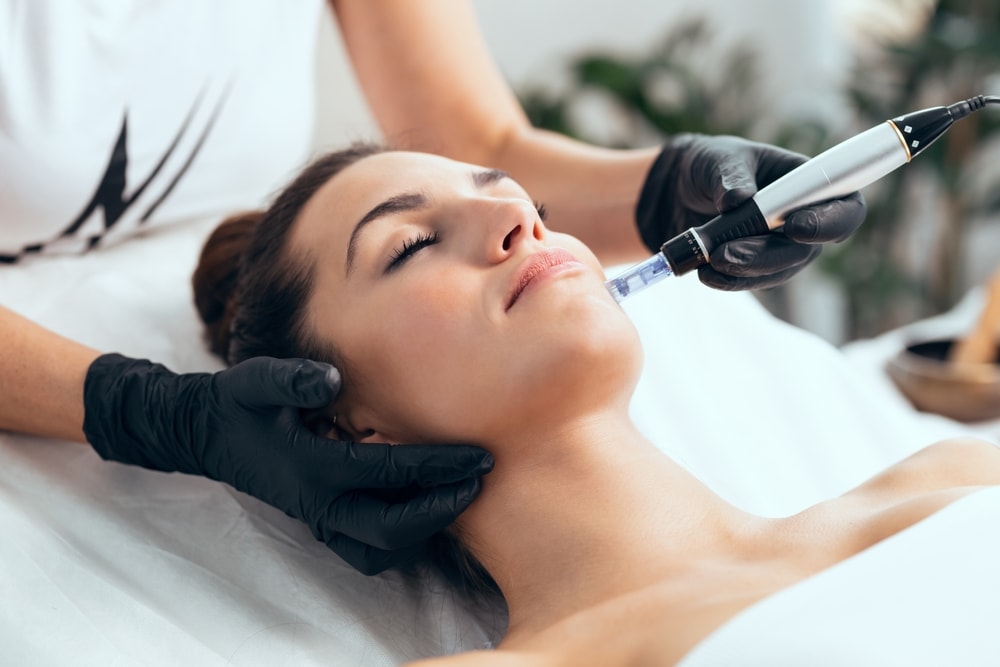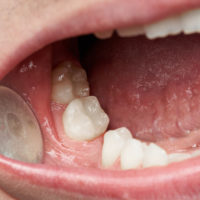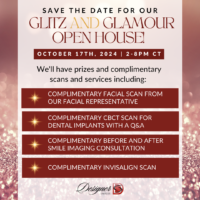What Is PRF Microneedling?
PRF microneedling combines two popular facial aesthetic treatments into one. PRF (or “platelet-rich fibrin”) is a biologen material that is abundant in platelets, fibrin, and other growth factors. When extracted from a patient’s blood and subsequently re-injected, PRF can nourish the skin and replenish youthful volume.* Meanwhile, microneedling creates micro-injuries in the skin’s surface to stimulate the body’s natural healing process and increase collagen and elastin production.
At Designer Smiles, our cosmetic dentist is excited to offer not only the full breadth of oral health treatments, but several non-surgical aesthetic procedures, as well. Dr. Ann or Dr. Lauren would be glad to meet with you to build a personalized treatment plan around your dental and aesthetic needs. Schedule your initial consultation today!
- PRF Microneedling Benefits
- PRF Microneedling Procedure
- PRF Microneedling Results
- PRF Microneedling Cost
What Are the Benefits of PRF Microneedling?
While both PRF and microneedling can produce significant benefits on their own, experts have found that performing these two together can produce an even more refreshed and rejuvenated appearance. The advantages of PRF microneedling often include:
- An increase in collagen and elastin (and, as such, the removal of fine lines and wrinkles)
- Reduction of additional common cosmetic issues (e.g. hyperpigmentation, pores, scars)
- Enhanced skin texture
- A more balanced skin tone
PRF microneedling is also very versatile. Depending on your aesthetic goals, we can perform the treatment on your face, neck, or décolletage. Additionally, the microneedling device can be adjusted to a depth that suits your unique complexion and level of skin sensitivity.

What Does the PRF Microneedling Procedure Involve?
To begin the treatment, your provider will draw a small amount of your blood. From there, he or she will place it into a centrifuge to separate the blood components and concentrate the platelets and fibrin, thereby creating PRF. Then, as your provider gently guides the handheld microneedling device over the treatment area, he or she will apply the PRF gel, encouraging the micro-injuries to absorb it for cell regeneration, collagen synthesis, and overall skin rejuvenation.
Although most patients do not experience significant discomfort during the PRF microneedling treatment, we can use a topical anesthetic to ease pain if you so desire. Moreover, you may notice slight redness, bruising, or swelling after the treatment, but these effects are normal and should fade promptly.
What Are the Typical Results of PRF Microneedling?
PRF microneedling typically produces a more revitalized, youthful, and smooth appearance – especially when administered by an experienced provider. With this in mind, it may take around four to six weeks for the effects to become fully noticeable. To potentially maintain results, we often recommend that patients return for multiple PRF microneedling sessions spaced a few weeks apart.
Following the procedure, we also advise you to be mindful of your skin health, avoiding excessive sun exposure and using medical-grade products as needed. If you wish, our team would be happy to refer you to a dermatologist or skincare specialist.
How Much Does PRF Microneedling Cost?
At Designer Smiles, pricing for PRF microneedling generally ranges from $475 to $675. Please note that the final cost is contingent upon the number of sessions performed, the area(s) of the body being treated, the incorporation of other solutions, and possibly additional expenses.
Our team always aims to make the financial aspect of your visit as stress-free as possible. As such, please never hesitate to come to us with any questions! We also invite you to explore our dental financing page. If you are interested in potentially paying for your treatment through Lending Club or CareCredit®, we would be glad to determine whether you are eligible.
Contact Designer Smiles Today
Ready to learn more about PRF microneedling? Contact Designer Smiles to schedule your consultation!


